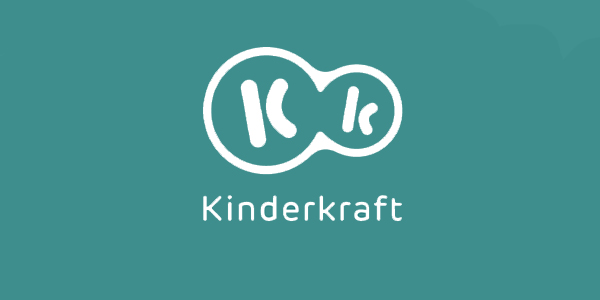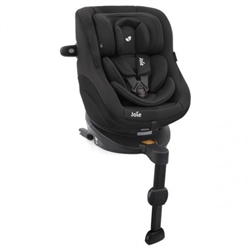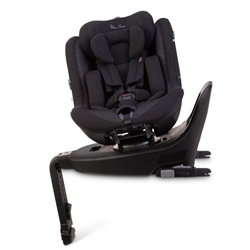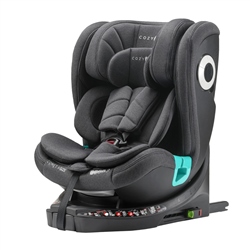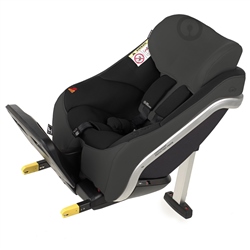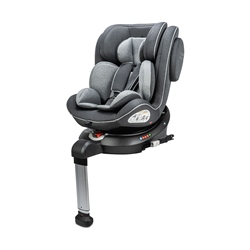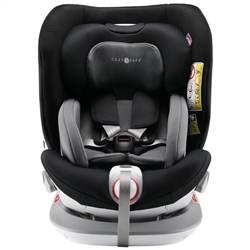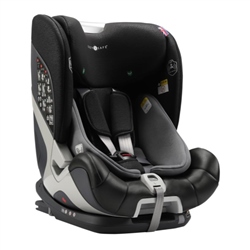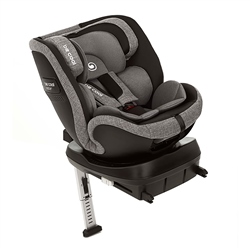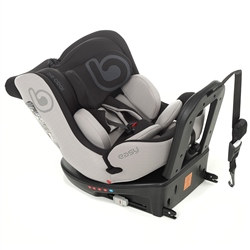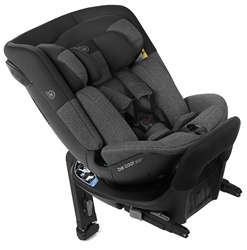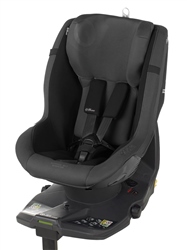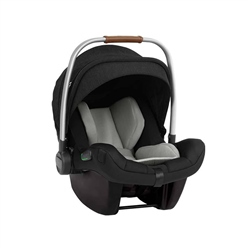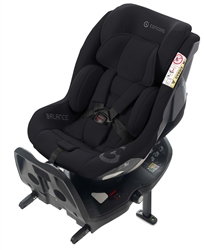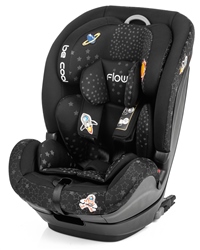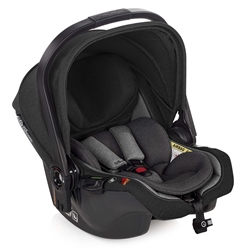Car Seat Buying Guide
From the very moment your baby leaves hospital right up until they reach 135cm or under 12 years old, they will need to travel in a car seat for every journey. Obviously using a child car seat is the best way to keep your child safe in the event of an accident, but it’s also a legal requirement.

Confused about what you will need for your baby?
Choose an option below to get started & discover our Car Seat options
(Or read our Top Buying Tips)
Infant/Baby Car Seat - Group 0+ car seats are portable baby car seats that you can use from birth until your baby is around 12 to 15 months old.
Some Group 0+ baby car seats are designed so that you can also attach them to a pushchair chassis to form a travel system. This means that you can take your baby from car to pushchair without having to disturb them too much.
Our advice is to avoid keeping babies, particularly very young ones, in car seats any longer than absolutely necessary and never for sleeping inside the house.
However, some innovative Group 0+ car seats can convert into a 180° lie-flat carrycot position, which can be used on your pram and even in the car. Most are suitable for overnight sleeping and the healthier lying flat position in the car, which is especially recommended by health officials for long journeys as there are no time limits. Simply because they facilitate new-born respiration, nurtures the abdomen and aids spinal development.
They are a great choice for parents with newborn and premature babies.
You are on your way to finding the perfect INFANT CARRIER
Now just one more question...
Choose your Budget
We have products to suit all budgets.

0 - 4 Years - Group 0+ 1 allows for your baby to be in the car from birth to around four years old.
Your baby will initially travel in the seat rearward facing and usually after 15 months you can change the seat to face forwards. Most are fixed in the car and offer a rotate option as they can be rearward facing of front facing.
Unlike a baby/infant car seat (Group 0+) a Group 0+/1 car seat will stay fixed in your vehicle. You won't be able to take it out and pop it onto a travel system chassis.
They are a great choice for parents who like using the carrycot on their pram or who have a second car. Because they are larger than a Group 0+ car seat this type of seat may take up more space in your car.
You are on your way to finding the perfect car seat for 0 - 4 YEARS
Now just one more question...
Choose your Budget
We have products to suit all budgets.

0 - 12 Years - Group 0,1,2 & 3 allow for the car seat to be used from birth all the way up to 12 years of age as they can grow with the child by removing padding and extending parts to ensure that your child is comfortable and safe.
Like the Group 0+/1 they are likely fixed to a base and unable to be put onto a pram, again though they are an amazing option for a secondary vehicle and are normally amazing value for money as they are the only car seat you’ll need!
You are on your way to finding the perfect car seat for 0 - 12 YEARS
Now just one more question...
Choose your Budget
We have products to suit all budgets.

9 Months - 4 Years - Group 1 car seats are great for once you have finished with your infant/baby car seat. They normally allow for either front or rearward facing and are a great second stage car seat.
Many car seats that are Group 1 are forward facing, although you can find some that let your child travel rearward facing until he or she is up to four years old. These are also known as ERF or Extended Rear Facing car seats.
You are on your way to finding the perfect car seat for 9 MONTHS - 4 YEARS
Now just one more question...
Choose your Budget
We have products to suit all budgets.

9 Months - 12 Years - Group 1,2 & 3 car seats are much like the Group 1 car seat in that it is for after you are finished with the infant/baby car seat.
The key difference is that they allow for use to 12 years old and allow you to secure your baby in a five-point safety harness initially, then the seat converts to a high-backed booster seat when your child is older and bigger. Multi-group car seats can be a more economical way of buying a child car seat, as they will last your child for longer.
A car seat that covers more than one car seat group is also known as a multi-group seat.
You are on your way to finding the perfect car seat for 9 MONTHS - 12 YEARS
Now just one more question...
Choose your Budget
We have products to suit all budgets.

3 - 12 Years - Group 2 3 car seats are the next stage if you have bought an infant/baby car seat then a Group 1 car seat. This is the next stage after them. These car seats are normally great value as they are usually only front facing and can be fixed by isofix and belt or belt alone.
Most group 2/3 child car seats don't have a harness. Instead, you'll secure your child and the seat using the car's adult seatbelt.
You are on your way to finding the perfect car seat for 3 - 12 YEARS
Now just one more question...
Choose your Budget
We have products to suit all budgets.

i-Size - i-Size is part of a new car seat regulation called R129. Introduced in 2013 it means that if your car is i-Sized approved, then any car seat with the i-Size logo attached will fit into your car and is done so via an isofix base. It is a good idea to see if your car has isofix ports in it and if they are easily accessible too.
The use of isofix bases means that there should be a reduced risk of fitting your car seat incorrectly as isofix bases and car seats are generally easier to install than those that require a seat belt.
i-Size car seats use height to distinguish between which group you need to use for your child and have introduced side impact crash testing as another part of the approval process.
The use of isofix bases means that there should be a reduced risk of fitting your car seat incorrectly as isofix bases and seats are generally easier to install than those that require a seat belt.
i-Size car seats use height to distinguish between which group you need to use for your child and have introduced side impact crash testing as another part of the approval process.
You are on your way to finding the perfect I-SIZE CAR SEAT
Now just one more question...
Choose your Budget
We have products to suit all budgets.
Or browse our bestsellers...
-
£225.00£280.00 Save 20%
-
£149.95£199.95 Save 25%
-
£169.99£225.00 Save 24%
-
£325.00£395.00 Save 18%
-
£299.00£575.00 Save 48%
-
£139.95£159.95 Save 13%
-
£95.99£119.99 Save 20%
-
£149.99£179.99 Save 17%
-
£115.00£135.00 Save 15%
-
£199.00£399.00 Save 50%
-
£194.99£249.95 Save 22%
-
£149.99£189.95 Save 21%
-
£124.95£179.99 Save 31%
-
£119.95£169.95 Save 29%
-
£94.95£130.00 Save 27%
-
£179.00£219.95 Save 19%
-
£159.99£199.99 Save 20%
-
£145.00£179.95 Save 19%
-
£65.00£75.00 Save 13%
-
£124.99£169.95 Save 26%
-
£109.95£235.00 Save 53%
-
£249.00£299.00 Save 17%
-
£49.99£60.00 Save 17%
-
£289.95£349.95 Save 17%
-
£219.95£299.95 Save 27%
-
£146.99£175.00 Save 16%
-
£349.00£399.00 Save 13%
-
£249.00£419.00 Save 41%
-
£249.00£319.00 Save 22%
-
£349.00£499.00 Save 30%
-
£99.00£119.00 Save 17%
-
£199.00£229.95 Save 13%
-
£249.00£289.00 Save 14%
-
£79.00£139.95 Save 44%
-
£199.00£299.00 Save 33%
-
£289.00£349.00 Save 17%
-
£159.00£189.00 Save 16%
-
£229.95£279.95 Save 18%
-
£179.00£229.00 Save 22%
-
£196.00£240.00 Save 18%
-
£199.00£399.95 Save 50%
-
£199.00£279.99 Save 29%
-
£129.99£179.99 Save 28%
-
£249.00£399.00 Save 38%
-
£169.00£269.00 Save 37%
-
£99.00£149.95 Save 34%
-
£249.00£399.00 Save 38%
-
£160.00£235.00 Save 32%
-
£199.00£379.95 Save 48%
Popular Car Seat Brands.
Top Tips for buying the best car seat.
Tip 1 +
Understand what car seat group you need.
By law, all children under 135cm tall or under the age of 12 need to have a car seat. There are 8 groups of car seat under the EU regulations and are tested to the fullest for safety, comfort, and ease of use meeting either of the required standards ECE R44 or ECE R129 (i-size).
It is recommended to keep a child rearward facing until the age of 15 months, below this age they are more vulnerable if there is a forceful impact and rearward facing car seats offer additional protection in the event of this happening.
A guide to finding your car seat group.
| Group | Child’s Weight* | Approx Age | Child’s Height** |
|---|---|---|---|
| 0 | Birth – 10kg/22lb | Birth to 12 months | 40 – 65cm |
| 0+ | Birth – 13kg/29lb | Birth to 15 – 18 months | 40 – 85cm |
| 0, 1 | Birth – 18kg/40lb | Birth to 4 years | 40 – 105cm |
| 0, 1, 2, 3 | Birth – 36kg/79lb | Birth to 12 years | 40 – 150cm |
| 1 | 9 – 18kg/20 – 40lb | 9 months to 4 years | 85 – 105cm |
| 1, 2 | 9 – 25kg/20 – 55lb | 9 months to 7 years | 85 – 125cm |
| 1, 2, 3 | 9 – 36kg/20 – 79lb | 9 months to 12 years | 85 – 150cm |
| 2 | 15 – 25kg/33 – 55lb | 3 to 7 years | 100 – 125cm |
| 2, 3 | 15 – 36kg/33 – 79lb | 3 to 12 years | 100 – 150cm |
| *Applies to R44 | **Applies to R129 (iSize) |
Tip 2 +
Understanding i-Size
i-Size is part of a new car seat regulation called R129. Introduced in 2013 it means that if your car is i-Sized approved, then any car seat with the i-Size logo attached will fit into your car and is done so via an isofix base. It’s a good idea to see if your car has isofix ports in it and if they are easily accessible too.
The use of isofix bases means that there should be a reduced risk of fitting your car seat incorrectly as isofix bases and seats are generally easier to install than those that require a seat belt.
i-Size car seats use height to distinguish between which group you need to use for your child. This is a key difference between them and non i-Size car seats which use weight instead. They are not replacing weight-based car seats currently they are just another option for you to pick.
Another key feature of i-Size car seats is that they have introduced side impact crash testing as another part of the approval process. Which was not something that the older R44 models were required to pass, however many do still test this as an extra precaution.
Tip 3 +
How much should I spend on a car seat.
While you can spend anywhere between £20 and hundreds of pounds, we would advise that when it comes to a car seat, its better not to judge based solely on how cheap it is. Get the best car seat you can within your budget.
Which? test each car seat that they review and according to their own website, it is rare to find a car seat that is both cheap and provides enough protection to be deemed a Best Buy.
Our advice would be to look at the best possible car seat within your budget. We have models which are £200 and are made to do from birth to 4 years. This broken down is 13p a day for a car seat. Not bad value for money at all!
Tip 4 +
Try it in your car before deciding.
We allow for car seat fitting to see if it fits in your car. Its best to check the car seat and see which cars it fits into before you go ahead and buy it. This is because not all car seats fit into every car. Some cars have back seats that are at angles not suitable for certain car seats and the last thing you want Is to find the car seat you like, only to discover that it doesn’t fit into your car!
Most car seat manufacturer manuals can be found online and within them is usually a list of suitable cars. It’s also a good idea to check if and where your isofix points are in your car. Most modern cars will have them but it is a good idea to check them, as if you have bought your car second hand, there may be a chance they have been damaged or not even have the points depending on its age.
All car seats are classified as either Universal, Semi-universal or Vehicle specific approval. This will help you identify their compatibility to your vehicle(s).
Universal approval
If the car seat has a universal approval label, it means the seat is suitable to be used in any car. You must use the ISOFIX anchorage points in your car, including the top tether or foot support, if it is an ISOFIX car seat. If you're not sure, look in your vehicle’s handbook to see if it says the car is suitable for “Universal ISOFIX child seats” or “Universal child seats”; depending on the installation method used for the car seat (isofix or seat belt).
For your peace of mind, most of our car seats we stock are universal approval, so they will fit in all cars.
Semi-universal approval
If the car seat is marked semi-universal approval, it means it can be used in most vehicles. For your peace of mind, you need to check the child seat manufacturer’s car fitting list. If your car type and model is listed, you can be confident it is suitable.
Vehicle specific approval
A vehicle specific car seat is only approved for use in these cars. The car must be listed in the child seat manufacturer’s car fitting list.
i-Size car seats
The i-Size (R129) safety standard has been developed together with car manufacturers to ensure full compatibility between the Child Car Seat and the car. An i-Size Car seat is 100% compatible with an i-Size vehicle seat and almost all cars with Isofix anchors.
EU Approved
All car seats in this country should be EU approved, so make sure this is visible on the car seat before you buy one online. This way you know that it is fully tested and legal.
Tip 5 +
Using a car seat.
Make sure you are always putting your child in or removing your child from the car from the pavement side of the car. Also making sure that your child is securely strapped in according to the manufacturer’s instruction. Ensuring that your child is not in a heavy coat that may mean they are not secured correctly. Best to ask to see in store or watch a video online of the correct way to strap your child into the car seat.
Ensure that where possible, there is no food in the car seat, as it tends to get within the mechanisms of the car seat and can cause issues with the locks etc over the lifetime of the car seat.
If using isofix, make sure all points display a green, secure lock position. This way you know that you have put the car seat in correctly and is safe for use.
Take breaks on long journeys. It is important that your baby does not remain in the car seat for extended periods of time as there is the risk of oxygen desaturation. This is when your baby struggles to keep their head up and therefore struggles to breathe. It is best to break a longer journey up with 15-minute breaks to ensure this does not happen. Or investigate buying a lie flat car seat, which allows for these longer journeys if you are a family who travel a lot.










